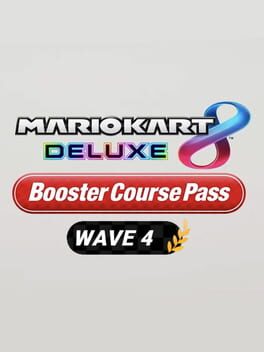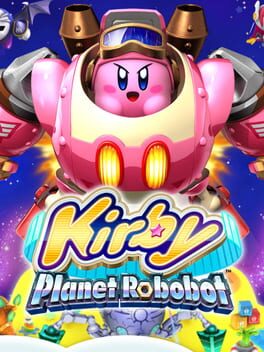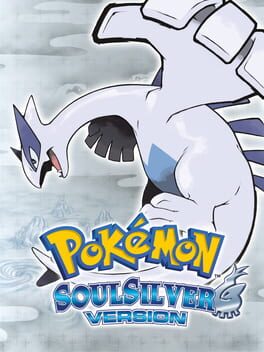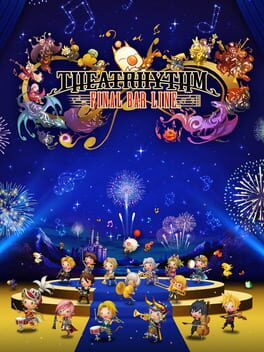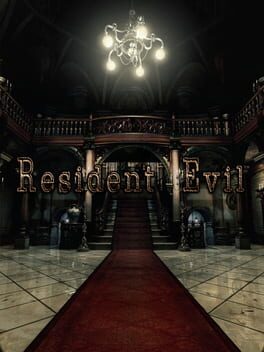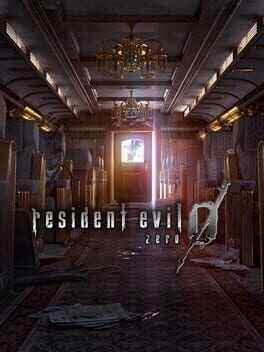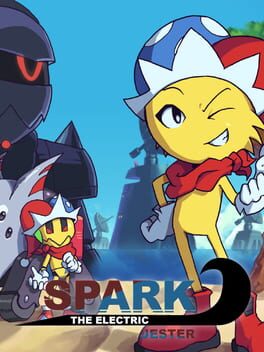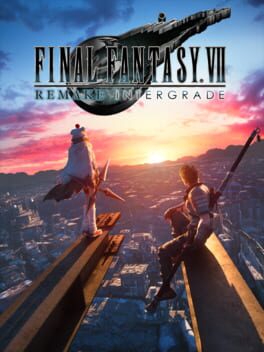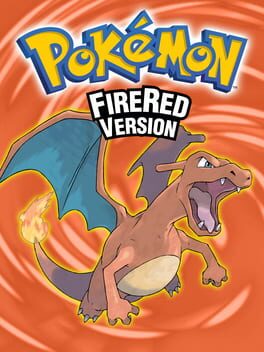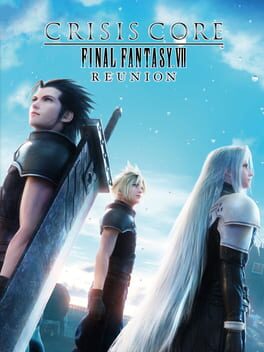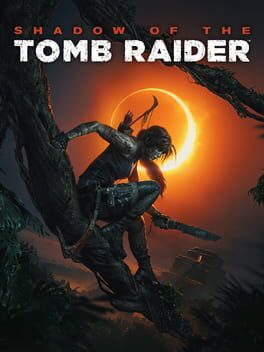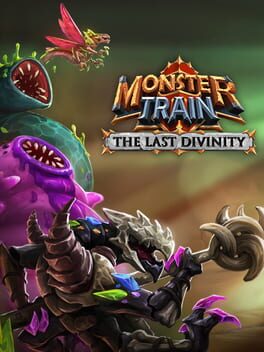2022
I had a lot of fun playing Tunic, with its cute artstyle and simple but addicting gameplay. Exploring in this game is done really well, with hidden paths and areas everywhere. Constant progress through new key items, or stat upgrades. It really felt like there was so many paths to take at any one time, yet I rarely seemed to meet any dead ends. I don't know exactly how linear the game is since I know some abilities are definitely required for some parts, but for a game with as much freedom as it gives, I never seemed to run into roadblocks. Instead it was a case of getting a new ability and getting excited to try it out on all the old places I've already been.
And even in the times I did get lost, it didn't feel like a complete waste of time because every enemy I killed brought me one step closer to paying for that next upgrade.
The game manual is obviously the biggest thing that gives the game its identity, and most people love it or hate it. I liked it overall, I thought it generally gave enough info to at least beat the game without having to dig deep. But some of the optional stuff is insane to expect people to work out by themselves, even just being able to get the true ending.
I think what I'd have liked was a way to get the text translated in-game. So many ways they could have done this, either by having each letter be a hidden collectable so you slowly build it up, having a translation be a prize for the final boss, so only in new game plus could non-super devoted players get to understand it, or if they really wanted to make the players do it, allow them to enter letters for each symbol that automatically turns every symbol into that letter. Never telling the player if they got the right letter, so it'd be just the same as writing them down on paper, but without the need to constantly cross-reference.
The majority of the game is just perfect. I can only really criticise some of the decisions to make some aspects near impossible without an online guide, or more time dedication than necessary.
And even in the times I did get lost, it didn't feel like a complete waste of time because every enemy I killed brought me one step closer to paying for that next upgrade.
The game manual is obviously the biggest thing that gives the game its identity, and most people love it or hate it. I liked it overall, I thought it generally gave enough info to at least beat the game without having to dig deep. But some of the optional stuff is insane to expect people to work out by themselves, even just being able to get the true ending.
I think what I'd have liked was a way to get the text translated in-game. So many ways they could have done this, either by having each letter be a hidden collectable so you slowly build it up, having a translation be a prize for the final boss, so only in new game plus could non-super devoted players get to understand it, or if they really wanted to make the players do it, allow them to enter letters for each symbol that automatically turns every symbol into that letter. Never telling the player if they got the right letter, so it'd be just the same as writing them down on paper, but without the need to constantly cross-reference.
The majority of the game is just perfect. I can only really criticise some of the decisions to make some aspects near impossible without an online guide, or more time dedication than necessary.
Amsterdam Drift: I loved this one, especially since large parts of it doesn't even take place in the usual "city" areas, making it stand out from city tracks. Lap 2 is a bit dull though. 8.5/10
Riverside Park: The glow up is real, but I still think the track isn't amazing. The second half is better, especially jumping through the waterfall. 6.5/10
DK Summit: Not as good or long as I remember, still fun. 7/10
Yoshi's Island: So many easter eggs and love poured in to this track. I do think they could have done just a liiittle more with the track itself since most of the theming is background elements. 9/10
Bangkok Rush: First 2 laps are pretty plain, other than the ability to go on top of the railways at some parts. Lap 3 is a banger. 7/10
DS Mario Circuit: Turning the mid-section of the track into a forest helped a lot, but it's still just a circuit track. 6/10
Waluigi Stadium: They went hard on the dirt bike track aesthetic on this one. A shame they made the Pirahna Plant section way easier. 8/10
Singapore Speedway: Lots of variety, great visuals. Maybe a bit too many generic parts though. 8/10
Getting new characters is exciting, but admittedly I'm not a huge fan of Birdo.
Riverside Park: The glow up is real, but I still think the track isn't amazing. The second half is better, especially jumping through the waterfall. 6.5/10
DK Summit: Not as good or long as I remember, still fun. 7/10
Yoshi's Island: So many easter eggs and love poured in to this track. I do think they could have done just a liiittle more with the track itself since most of the theming is background elements. 9/10
Bangkok Rush: First 2 laps are pretty plain, other than the ability to go on top of the railways at some parts. Lap 3 is a banger. 7/10
DS Mario Circuit: Turning the mid-section of the track into a forest helped a lot, but it's still just a circuit track. 6/10
Waluigi Stadium: They went hard on the dirt bike track aesthetic on this one. A shame they made the Pirahna Plant section way easier. 8/10
Singapore Speedway: Lots of variety, great visuals. Maybe a bit too many generic parts though. 8/10
Getting new characters is exciting, but admittedly I'm not a huge fan of Birdo.
I realised how much I'd love this game on the first stage of area 2, where you ran through a street while cars drove in from the background driven by Waddle Dees. I love platformers that use level themes beyond the basic "grass world, desert world, snow world, lava world" etc, and Kirby Planet Robobot does so well in this area. There's also levels that have you running through train carriages, and then on top of the train, or casinos with giant pool tables where you have to dodge giant pool balls, or in huge freezers(?) where you run along ice pops. It's all so much fun. I do think they start reusing too many ideas near the end though, especially for such a short game.
There's a lot of gimmicks in the levels that I liked a lot, my favourite being maybe the parts where you control both your Kirby in the foreground, and a robot Kirby in the background simultaneously.
I haven't played enough Kirby games to know exactly what's new and what isn't, but this game has a lot of really creative abilities, like circus, doctor and leaf. And each one has a full on moveset to utilise rather than just one or two basic actions. The robot suits are a bit more limited in their abilities - both in terms of how many they can copy and actions they can do in them - but that's fine because their main point is to be able to smash stuff that Kirby has trouble with, or pick up large items for puzzles. It also has total game style shifts when using the wheel or jet abilities.
While the story mode is short, you can get a bit more playtime out of the game via its extra modes, like "speed run the game as Meta Knight" or of course the obligatory boss rush.. My favourite is the RPG-like one where you pick a Kirby class, fight bosses with maxed out HP and get to level up after battles. I would so play a full Kirby RPG game (I realised they made a version for both 3DS and Switch but they still only have 4 classes AND have microtransactions? Gross).
There's a lot of gimmicks in the levels that I liked a lot, my favourite being maybe the parts where you control both your Kirby in the foreground, and a robot Kirby in the background simultaneously.
I haven't played enough Kirby games to know exactly what's new and what isn't, but this game has a lot of really creative abilities, like circus, doctor and leaf. And each one has a full on moveset to utilise rather than just one or two basic actions. The robot suits are a bit more limited in their abilities - both in terms of how many they can copy and actions they can do in them - but that's fine because their main point is to be able to smash stuff that Kirby has trouble with, or pick up large items for puzzles. It also has total game style shifts when using the wheel or jet abilities.
While the story mode is short, you can get a bit more playtime out of the game via its extra modes, like "speed run the game as Meta Knight" or of course the obligatory boss rush.. My favourite is the RPG-like one where you pick a Kirby class, fight bosses with maxed out HP and get to level up after battles. I would so play a full Kirby RPG game (I realised they made a version for both 3DS and Switch but they still only have 4 classes AND have microtransactions? Gross).
This is easily the most effort Gamefreak put in to a Pokémon remake. So much is added without compromising anything from the originals. They even threw in the small Suicune subplot from Crystal. New areas, redesigned gyms, and new features, including everyone's favourite walking Pokémon system that they haven't been able to get right since.
Pokéathalon is still one of the best side activities in the games.
Unlike Fire Red and Leaf Green it also doesn't stop you evolving Pokémon into their new evolutions pre-national dex. Kind of... They do lock a ton of the items required to do so to post-game, but Pokémon that can evolve via knowing specific moves, like Piloswine and Aipom, are free to evolve into their non-Johto native forms.
It unfortunately did NOT fix Johto's horrible level curve. Route trainers just seem to scale completely differently to gym leaders, so you'll still face level 12 teams after fighting a level 19 gym leader. But where it gets at its worst is after the 4th gym where the game let's you go left on the intended path, or right to the "7th" gym. What that means is both routes are essentially balanced around being the 5th gym, so whichever one you don't pick first will be massively underlevelled. And that's sugarcoating it, because even if you go to the Lake of Rage immediately after the 4th gym, this route that is technically around the 7th gym, or optionally the 5th gym, has trainers with Pokémon lower levelled than the 3rd gym leader. The whole balance is such a mess and it needed an update more than anything.
The weirdest part is that while Gamefreak didn't do anything with Johto, Kanto's gym leaders WERE balanced. Before they were pretty much all jokes since most of them were in the lower elite 4 levels (keeping in mind you need to beat the champion just to get access to the Kanto leaders). Now the first gym leader you face in Kanto starts at the same level as the champion.
This is definitely a great remake and has a ton of soul, it's just a shame they didn't fix what was imo the biggest problem with the gen 2 games in the first place.
Pokéathalon is still one of the best side activities in the games.
Unlike Fire Red and Leaf Green it also doesn't stop you evolving Pokémon into their new evolutions pre-national dex. Kind of... They do lock a ton of the items required to do so to post-game, but Pokémon that can evolve via knowing specific moves, like Piloswine and Aipom, are free to evolve into their non-Johto native forms.
It unfortunately did NOT fix Johto's horrible level curve. Route trainers just seem to scale completely differently to gym leaders, so you'll still face level 12 teams after fighting a level 19 gym leader. But where it gets at its worst is after the 4th gym where the game let's you go left on the intended path, or right to the "7th" gym. What that means is both routes are essentially balanced around being the 5th gym, so whichever one you don't pick first will be massively underlevelled. And that's sugarcoating it, because even if you go to the Lake of Rage immediately after the 4th gym, this route that is technically around the 7th gym, or optionally the 5th gym, has trainers with Pokémon lower levelled than the 3rd gym leader. The whole balance is such a mess and it needed an update more than anything.
The weirdest part is that while Gamefreak didn't do anything with Johto, Kanto's gym leaders WERE balanced. Before they were pretty much all jokes since most of them were in the lower elite 4 levels (keeping in mind you need to beat the champion just to get access to the Kanto leaders). Now the first gym leader you face in Kanto starts at the same level as the champion.
This is definitely a great remake and has a ton of soul, it's just a shame they didn't fix what was imo the biggest problem with the gen 2 games in the first place.
If you liked the 3DS games then it's pretty much the same thing, just with a couple of changes here and there, and even some omissions of some features (but the addition of many many more). The most obvious change is that touch controls are no longer a thing. Curtain Call did ease players in to this by making both buttons and touch screen an option, so if you're like me, you already switched to button inputs over using the stylus anyway. In any case this change allows them to make good use of the fact everyone is using a controller by allowing more inputs at a time. Double triggers, slides and triggers, quadruple inputs at once. All this even allowed for an entire extra difficulty mode (which technically existed in the arcade games first, but how many people played those?).
Unless you lived and died by the touch controls, this game offers a bigger, better experience than before. I could go in to everything great about this game, but a lot of it would just be parroting my review of Curtain Call. Instead I'm going to talk about my favourite aspect: Series Quests.
Rhythm games, for people like me (who are not very good at them) are fun, but generally end with a whimper, because if we can't 100% them, where do we end? Just kind of decide one day that we're done with the game I guess. Series quest changed that by being a full-on single player experience. It does sound very basic - it's basically just "play every song in the game", but it's the "quest" part that makes it fun. Every single song in series quest has an attached challenge. It could be something focusing entirely on the rhythm part of the game, like "get a perfect chain" or "get 70% rainbow criticals". But then there's the ones that require you to build a party around them, such as "deal X amount of damage with a summon" (so you want to use a team that has abilities to boost summon power) or "activate X or more abilities" (so you want a team with a lot of easily spammable abilities). Sometimes the mission may even be a hybrid, like if it's "finish the stage with at least 80% health", you may be good enough to do that just by not missing any notes, but if you struggle you can fill your party with healers.
Some quests also have an extra element to them, like bosses have more HP, or the triggers move faster.
The last song in each series is generally "defeat the boss", but the boss doesn't show up immediately, so you need a team that is good for both clearing the mobs beforehand AND nuking the boss before the time runs out. What makes this harder is that Final Bar Line changes how abilities work - many of them now have a limited use per battle, and you can only equip 3 per character. Add in things like bosses weaknesses and resistances and you really have so much more team building in this game than you ever had to do before.
And the best part is it's all optional. If you literally just want a Final Fantasy rhythm game without the RPG stuff, all these quests just give bonus collectibles, or items that enhance your characters. You can unlock every song without ever invested in the characters or clearing any quests. I would still suggest just filling your party with defensive and healing characters though just because it will help you survive longer in harder difficulties so you're not constantly kicked out of the song for missing too many notes.
By the way clearing all quests can be done on any difficulty - minus a small handful that require you to play the stages on a higher one, but those can be cheesed by simply doing what I said above and building a party that makes it impossible to die. It's also worth noting that the quests only ever ask you to play on the 2nd highest difficulty level, so you'd never need to play on supreme to finish the "campaign". So no matter your skill level, there's a fun, lengthy single player experience here for everyone.
There's honestly so much more to talk about, from the changes to how field mode works, to the change in how event stages play, but I think I'll leave it here because review writing as a hobby shouldn't take me all night!
Unless you lived and died by the touch controls, this game offers a bigger, better experience than before. I could go in to everything great about this game, but a lot of it would just be parroting my review of Curtain Call. Instead I'm going to talk about my favourite aspect: Series Quests.
Rhythm games, for people like me (who are not very good at them) are fun, but generally end with a whimper, because if we can't 100% them, where do we end? Just kind of decide one day that we're done with the game I guess. Series quest changed that by being a full-on single player experience. It does sound very basic - it's basically just "play every song in the game", but it's the "quest" part that makes it fun. Every single song in series quest has an attached challenge. It could be something focusing entirely on the rhythm part of the game, like "get a perfect chain" or "get 70% rainbow criticals". But then there's the ones that require you to build a party around them, such as "deal X amount of damage with a summon" (so you want to use a team that has abilities to boost summon power) or "activate X or more abilities" (so you want a team with a lot of easily spammable abilities). Sometimes the mission may even be a hybrid, like if it's "finish the stage with at least 80% health", you may be good enough to do that just by not missing any notes, but if you struggle you can fill your party with healers.
Some quests also have an extra element to them, like bosses have more HP, or the triggers move faster.
The last song in each series is generally "defeat the boss", but the boss doesn't show up immediately, so you need a team that is good for both clearing the mobs beforehand AND nuking the boss before the time runs out. What makes this harder is that Final Bar Line changes how abilities work - many of them now have a limited use per battle, and you can only equip 3 per character. Add in things like bosses weaknesses and resistances and you really have so much more team building in this game than you ever had to do before.
And the best part is it's all optional. If you literally just want a Final Fantasy rhythm game without the RPG stuff, all these quests just give bonus collectibles, or items that enhance your characters. You can unlock every song without ever invested in the characters or clearing any quests. I would still suggest just filling your party with defensive and healing characters though just because it will help you survive longer in harder difficulties so you're not constantly kicked out of the song for missing too many notes.
By the way clearing all quests can be done on any difficulty - minus a small handful that require you to play the stages on a higher one, but those can be cheesed by simply doing what I said above and building a party that makes it impossible to die. It's also worth noting that the quests only ever ask you to play on the 2nd highest difficulty level, so you'd never need to play on supreme to finish the "campaign". So no matter your skill level, there's a fun, lengthy single player experience here for everyone.
There's honestly so much more to talk about, from the changes to how field mode works, to the change in how event stages play, but I think I'll leave it here because review writing as a hobby shouldn't take me all night!
2017
2014
This review contains spoilers
(This is technically more a review of the remake than specifically this remaster, but it's the version I just played, so)
Back in 2002, the Resident Evil remake of a 1996 game set a standard for remakes that even remakes made in the 2020's, of games made 20+ years ago can't keep up with.
This remake does so much. It adds new sections to pretty much every area in the game. It adds new puzzles, it expands on old puzzles, it switches the order of puzzles and it throws in some twists to what the player thought they knew (such as the second Yawn battle taking place in a different area).
A few new mechanics are also thrown in without overshadowing the originals feel, only enhancing it, i.e Crimson Heads.
It's a game that is a brand new experience to a very familiar one.
Of course that's only really describing it as a remake. It keeps all the things I loved about the original, which is a review all of its own (see my Resident Evil Director's Cut review for that.)
The only thing I miss from the originals is the music (the Remake seems to go for more subtle tracks, if it even has something in any given area), and the garish colours of the mansion, replaced by generic dark hallways.
Back in 2002, the Resident Evil remake of a 1996 game set a standard for remakes that even remakes made in the 2020's, of games made 20+ years ago can't keep up with.
This remake does so much. It adds new sections to pretty much every area in the game. It adds new puzzles, it expands on old puzzles, it switches the order of puzzles and it throws in some twists to what the player thought they knew (such as the second Yawn battle taking place in a different area).
A few new mechanics are also thrown in without overshadowing the originals feel, only enhancing it, i.e Crimson Heads.
It's a game that is a brand new experience to a very familiar one.
Of course that's only really describing it as a remake. It keeps all the things I loved about the original, which is a review all of its own (see my Resident Evil Director's Cut review for that.)
The only thing I miss from the originals is the music (the Remake seems to go for more subtle tracks, if it even has something in any given area), and the garish colours of the mansion, replaced by generic dark hallways.
2016
This review contains spoilers
It's great they tried something unique for this game, and it does have a few good puzzles tied to it, but the partner system just...doesn't work with Resident Evil's item management. There's one point in the game where it prompts you to send Rebecca through a shaft, so you think "well I'll give my good weapons and healing items to Rebecca to deal with whatever's on the other side", but then she gets into a spot of trouble and you're forced back to Billy to go save her.
Each character also only has 6 item slots, and you have to make sure you have weapons and healing items on both at minimum, so key items have very little space. Oh at least 2 guns and 1 key item take up 2 full slots.
There's also no item boxes this time, instead opting for the ability to drop items anywhere. This means way more backtracking than before.
It all just leads to experience that's really messy overall and would have been better as a generic Resident Evil experience. And a generic Resident Evil experience it would be. The train is pretty cool, but after that short opening section, the locales seen in this game feel way too overly familiar by this point.
It still has a lot of the good points of the classic RE formula, like satisfying puzzles and good use of camera angles. I just think the way they've put it all together in this game doesn't standout at all, and the one thing this game does to stand on its own 2 legs actually makes it feel worse.
Each character also only has 6 item slots, and you have to make sure you have weapons and healing items on both at minimum, so key items have very little space. Oh at least 2 guns and 1 key item take up 2 full slots.
There's also no item boxes this time, instead opting for the ability to drop items anywhere. This means way more backtracking than before.
It all just leads to experience that's really messy overall and would have been better as a generic Resident Evil experience. And a generic Resident Evil experience it would be. The train is pretty cool, but after that short opening section, the locales seen in this game feel way too overly familiar by this point.
It still has a lot of the good points of the classic RE formula, like satisfying puzzles and good use of camera angles. I just think the way they've put it all together in this game doesn't standout at all, and the one thing this game does to stand on its own 2 legs actually makes it feel worse.
1998
Able to stand toe to toe with the other big collectathon on the N64.
Does many things right for the genre, such as not kicking you out after a level when getting a Jiggy. There's also just generally so much TO collect. Even the main collectable (Jiggy's) are different to the door gates (notes), then on top of that you have new special moves, extra health pieces, a "find 5 of these things in every level" (think red coins but more personality). Admittedly the special moves one can make your beginning set feel a bit limited.
But it does what I want most from these games, the worlds are super fun to explore. Not too big or confusing, but packed with things to find, secrets, and subareas with their own little storylines and/or characters. The game has so many different minigames and challenges for collectables.
The hub world is up there as one of the best. While Peach's Castle is iconic, and beautiful, it does feel very much like just a quick stop between the levels, with a few secret things to discover. But Gruntilda's lair is like an entire extra level in this game that keeps expanding. It is kind of easy to get lost though.
I do have a few nit-picks. The camera is the biggest, it is not forgiving at all.
Another is the fact that collecting all 100 notes has to be done in a single go. If you leave the level or even die, it resets them all (this also applies to anything you can collect in a level, such as the 5 Jinjo's).
Egg shooting can be a very fiddly thing.
Luckily the technical issues don't get in the way of the huge charm, personality and fun that radiates from the writing, characters and music, all in some very well designed levels.
Does many things right for the genre, such as not kicking you out after a level when getting a Jiggy. There's also just generally so much TO collect. Even the main collectable (Jiggy's) are different to the door gates (notes), then on top of that you have new special moves, extra health pieces, a "find 5 of these things in every level" (think red coins but more personality). Admittedly the special moves one can make your beginning set feel a bit limited.
But it does what I want most from these games, the worlds are super fun to explore. Not too big or confusing, but packed with things to find, secrets, and subareas with their own little storylines and/or characters. The game has so many different minigames and challenges for collectables.
The hub world is up there as one of the best. While Peach's Castle is iconic, and beautiful, it does feel very much like just a quick stop between the levels, with a few secret things to discover. But Gruntilda's lair is like an entire extra level in this game that keeps expanding. It is kind of easy to get lost though.
I do have a few nit-picks. The camera is the biggest, it is not forgiving at all.
Another is the fact that collecting all 100 notes has to be done in a single go. If you leave the level or even die, it resets them all (this also applies to anything you can collect in a level, such as the 5 Jinjo's).
Egg shooting can be a very fiddly thing.
Luckily the technical issues don't get in the way of the huge charm, personality and fun that radiates from the writing, characters and music, all in some very well designed levels.
This review contains spoilers
I'm not sure if you guys could tell, but I'm fairly certain this game is inspired heavily by Super Mario Bros!
Ok in all honesty, this is a really good Sonic rip-off, and fittingly has a great soundtrack too. I like mascot platformers, and Spark fits the part well. The power-ups Spark can get are a lot of fun, and all look great, offering both combat and traversal options, some of which might be a bit too overpowered, especially when you consider the fact LOSING a power-up is almost impossible. Some hits do knock them out of you (and what, if anything is different about these rare hits from the other 98% where you don't lose your power I don't know), but you can just grab it again straight away. Even dying doesn't make you lose your upgrades, instead just resetting you back to whatever you had at the last checkpoint. So the name is kind of funny since after getting your first power, you may never play as Spark with electric powers ever again.
The game has some great pixel art for its stages. But I do think the stages themselves felt a bit lacking in layout. This kind of ties in to the overpowered options for traversing the stages, but a lot of the game just felt like it was on auto-pilot. Sometimes literally as a lot of stages have mechanics that just seem to exist to move you forwards in pseudo-cutscenes, and a lot of sections just seem to be long stretches of road with loops and no obstacles. A lot of the levels reminded me of Stardust Speedway from Sonic, just a mess of paths. It's a shame because the game does have some great themes for its levels, but it often feels like they're just a backdrop rather than implemented into the actual level design.
Another issue I had with level design is that they have a lot of paths, but no reason to go off the most straightforward one. Best case scenario is that you'll find a power-up in a harder to reach path, but why bother? As I said, losing power-ups is so hard that by the time you've got the 2 you want, you'll never need to look for another one again.
While the pixel art is great, there's a handful of fully animated cutscenes and they look like they were drawn in MS paint.
After beating the game you unlock an "extra story" (read: exact same game but with a different character). That character being Fark, Spark's robotic clone.
Fark plays a little differently to Spark – mostly because he can’t use the power-ups at all. Instead he has his own moveset that can’t be replaced. He also only has 4 health, which is compensated by his parry ability (something I’m pretty sure Spark doesn’t have in any of his powers).
The lack of ability changing for Fark means you can’t rely on as many overpowered traversal abilities to speed through levels. He still has a decent kit, including built-in double jump, air dash and wall running. But you’ll find yourself needing to actually platform through the levels more often instead of essentially just skipping them. This did make me appreciate the level design a little more, even if some of my complaints, such as many of them feeling like just reskinned Star Dust Speedways, still apply.
Fark’s playthrough also adds a couple more bosses to the end of existing bosses, and maybe I’m wrong, but I feel like it puts late game enemies into levels earlier.
What I liked most about Fark though is his specific meter, which can be filled by hitting enemies or getting a perfect parry, while it loses progress if you get it. If you get this meter to half way, you can fully heal and activate a brief moment of invincibility. However if you fill the bar the full way you get to become "Super Fark" (gee I wonder where that comes from). Super Fark isn't as powerful as the invincible form, but it doesn't have the drawback of being time-limited. It does however require you to keep a full bar, so if you get hit, you lose the form, but you'll only need to do one more parry, or a few hits to fill it back up. The tough part is deciding if you want to risk filling this bar at the cost of not healing (you can still heal via the health pick-ups in levels, it's mostly a decision for boss fights).
Also there was a third way to fill up this super bar that I didn't mention - the boxes that contained Spark's power-ups now contain an item that fills Fark's bar about 1/8th of the way. What this means is these paths that lead to the power-ups in Spark's story, which were largely ignorable by him, have purpose for Fark.
It's kind of crazy how much Spark focuses on a more powerful and fast playthrough that let's you play in a variety of ways but doesn't take much advantage of any specific mechanic, while Fark's playthrough is a much more focused, slow (but not too slow) playthrough that rewards good timing and makes you fully experience the levels.
Fark could really stand as his own game, so the fact he's just a bonus extra playthrough is pretty crazy. In any case, both Spark and Fark have strengths and I think you need to play both to get full appreciation of what this offers.
Ok in all honesty, this is a really good Sonic rip-off, and fittingly has a great soundtrack too. I like mascot platformers, and Spark fits the part well. The power-ups Spark can get are a lot of fun, and all look great, offering both combat and traversal options, some of which might be a bit too overpowered, especially when you consider the fact LOSING a power-up is almost impossible. Some hits do knock them out of you (and what, if anything is different about these rare hits from the other 98% where you don't lose your power I don't know), but you can just grab it again straight away. Even dying doesn't make you lose your upgrades, instead just resetting you back to whatever you had at the last checkpoint. So the name is kind of funny since after getting your first power, you may never play as Spark with electric powers ever again.
The game has some great pixel art for its stages. But I do think the stages themselves felt a bit lacking in layout. This kind of ties in to the overpowered options for traversing the stages, but a lot of the game just felt like it was on auto-pilot. Sometimes literally as a lot of stages have mechanics that just seem to exist to move you forwards in pseudo-cutscenes, and a lot of sections just seem to be long stretches of road with loops and no obstacles. A lot of the levels reminded me of Stardust Speedway from Sonic, just a mess of paths. It's a shame because the game does have some great themes for its levels, but it often feels like they're just a backdrop rather than implemented into the actual level design.
Another issue I had with level design is that they have a lot of paths, but no reason to go off the most straightforward one. Best case scenario is that you'll find a power-up in a harder to reach path, but why bother? As I said, losing power-ups is so hard that by the time you've got the 2 you want, you'll never need to look for another one again.
While the pixel art is great, there's a handful of fully animated cutscenes and they look like they were drawn in MS paint.
After beating the game you unlock an "extra story" (read: exact same game but with a different character). That character being Fark, Spark's robotic clone.
Fark plays a little differently to Spark – mostly because he can’t use the power-ups at all. Instead he has his own moveset that can’t be replaced. He also only has 4 health, which is compensated by his parry ability (something I’m pretty sure Spark doesn’t have in any of his powers).
The lack of ability changing for Fark means you can’t rely on as many overpowered traversal abilities to speed through levels. He still has a decent kit, including built-in double jump, air dash and wall running. But you’ll find yourself needing to actually platform through the levels more often instead of essentially just skipping them. This did make me appreciate the level design a little more, even if some of my complaints, such as many of them feeling like just reskinned Star Dust Speedways, still apply.
Fark’s playthrough also adds a couple more bosses to the end of existing bosses, and maybe I’m wrong, but I feel like it puts late game enemies into levels earlier.
What I liked most about Fark though is his specific meter, which can be filled by hitting enemies or getting a perfect parry, while it loses progress if you get it. If you get this meter to half way, you can fully heal and activate a brief moment of invincibility. However if you fill the bar the full way you get to become "Super Fark" (gee I wonder where that comes from). Super Fark isn't as powerful as the invincible form, but it doesn't have the drawback of being time-limited. It does however require you to keep a full bar, so if you get hit, you lose the form, but you'll only need to do one more parry, or a few hits to fill it back up. The tough part is deciding if you want to risk filling this bar at the cost of not healing (you can still heal via the health pick-ups in levels, it's mostly a decision for boss fights).
Also there was a third way to fill up this super bar that I didn't mention - the boxes that contained Spark's power-ups now contain an item that fills Fark's bar about 1/8th of the way. What this means is these paths that lead to the power-ups in Spark's story, which were largely ignorable by him, have purpose for Fark.
It's kind of crazy how much Spark focuses on a more powerful and fast playthrough that let's you play in a variety of ways but doesn't take much advantage of any specific mechanic, while Fark's playthrough is a much more focused, slow (but not too slow) playthrough that rewards good timing and makes you fully experience the levels.
Fark could really stand as his own game, so the fact he's just a bonus extra playthrough is pretty crazy. In any case, both Spark and Fark have strengths and I think you need to play both to get full appreciation of what this offers.
It's ok. Like it's just a bite sized chunk of FF7 Remake in a story that didn't really need to exist but here we are. Yuffie's a pretty fun protag.
It does feel kind of awkward trying to cram every materia from the main game into just 2 chapters worth of content though.
Yuffie is fun to play, though I kind of feel like it was spoiled by adding her here, since finding out all the unique playstyles of the characters was what I was looking forward to in the next parts of the remake, and now that's one less character to be excited about. In any case the Sonon synergy that is unique to Yuffie, and presumably unique to the DLC, makes it stand out on its own in that regards at least.
It doesn't really have as many padding moments as the main game (crane puzzles urgh). But you'll still find yourself being forced to walk along with NPCs listening to exposition, or in the worst case, riding an elevator that takes like 5 minutes to actually reach its destination.
Fort Condor was pretty fun, I wouldn't mind seeing a much bigger version of it in the next game.
It does feel kind of awkward trying to cram every materia from the main game into just 2 chapters worth of content though.
Yuffie is fun to play, though I kind of feel like it was spoiled by adding her here, since finding out all the unique playstyles of the characters was what I was looking forward to in the next parts of the remake, and now that's one less character to be excited about. In any case the Sonon synergy that is unique to Yuffie, and presumably unique to the DLC, makes it stand out on its own in that regards at least.
It doesn't really have as many padding moments as the main game (crane puzzles urgh). But you'll still find yourself being forced to walk along with NPCs listening to exposition, or in the worst case, riding an elevator that takes like 5 minutes to actually reach its destination.
Fort Condor was pretty fun, I wouldn't mind seeing a much bigger version of it in the next game.
Hard to believe this "modern" retelling of the original Pokémon story is now over 3 times older than the original games were when this came out.
It's still imo the definitive way to play Kanto, even if its sorely missing some big QoL steps that would come just one gen later (most notably a special/physical split). It loses the gen 1 jank while not being as overly casual as Let's Go.
As a region Kanto is comfy, but fairly boring. Being based on a game with super limited hardware means most routes and caves are very plain and basic. It does still have some iconic landmarks though, like Pokémon Tower, or Nugget Bridge.
Trainer battles are probably at their most persistent. This is something I feel later games lack, in Kanto losing can actually feel quite bad because a lot of the time there's no easy way back to a free heal. If you're in the middle of Victory Road you'd need to not only go back out of the cave, but even go all the way back through the checkpoints to find a Pokémon centre.
This marathon through hordes of weak trainers that slowly wear you down becomes so trivial in later games thanks to NPCs offering healing after like every 3 battles, and/or routes only having a small handful of trainers to begin with. Whether or not you think this is a good or bad thing will vary, but I appreciate that gen 1's overabundance of these battles mixed with less convenient Pokécenters actually feel challenging.
Some weird design choices, like not letting you get Johto Pokémon before the national dex makes sense, but not allowing you to evolve a Golbat or Chansey by friendship (and STILL playing the evolution screen just to stop it) does not.
Sevii Islands are fine. They don't elevate the remake massively, but it's nice to have some postgame.
It's still imo the definitive way to play Kanto, even if its sorely missing some big QoL steps that would come just one gen later (most notably a special/physical split). It loses the gen 1 jank while not being as overly casual as Let's Go.
As a region Kanto is comfy, but fairly boring. Being based on a game with super limited hardware means most routes and caves are very plain and basic. It does still have some iconic landmarks though, like Pokémon Tower, or Nugget Bridge.
Trainer battles are probably at their most persistent. This is something I feel later games lack, in Kanto losing can actually feel quite bad because a lot of the time there's no easy way back to a free heal. If you're in the middle of Victory Road you'd need to not only go back out of the cave, but even go all the way back through the checkpoints to find a Pokémon centre.
This marathon through hordes of weak trainers that slowly wear you down becomes so trivial in later games thanks to NPCs offering healing after like every 3 battles, and/or routes only having a small handful of trainers to begin with. Whether or not you think this is a good or bad thing will vary, but I appreciate that gen 1's overabundance of these battles mixed with less convenient Pokécenters actually feel challenging.
Some weird design choices, like not letting you get Johto Pokémon before the national dex makes sense, but not allowing you to evolve a Golbat or Chansey by friendship (and STILL playing the evolution screen just to stop it) does not.
Sevii Islands are fine. They don't elevate the remake massively, but it's nice to have some postgame.
This review contains spoilers
Note: I never played the original, so this is as much a review for Crisis Core as a whole than just the remake.
An unnecessary but not un-welcome addition to the Final Fantasy 7 lore. Some old characters get expanded upon - it's interesting to see Sephiroth on the "good" side for a while. Some new characters get introduced, I particularly like Angeal, though Genesis...eh. I don't like how Genesis' entire personality and 90% of his dialogue revolve around a fictional novel. I don't like how they forced him in to one of FF7's most iconic scenes.
The story is relatively short, but manages to fit some absolutely iconic moments in. Including the famous last stand. This short story is made even shorter by the fact you spend 80% of your time watching cutscenes. Instead it seems the devs tried to force as much gameplay as possible into the "missions". In these basic challenges you run around one of about 7 themed corridors until you get to a boss and then beat the boss and get a reward. Simple. A few of them will have very light story elements (like a surprise Yuffie questline that has her trying to steal your reward at the end of each mission), but most of them literally just have a slight blurb as the entire backstory.
The PSP DNA is still here in how it tries to drag out dozens extra hours of gameplay with limited resources, and so there are 300 of these missions. Who decided it'd be fun to make players run through the same exact corridors, fighting the same enemies, 300 times? Most of the rewards aren't even unique and the bosses CONSTANTLY get reused (in fact most "bosses" are just the same basic enemies you fight in that exact same mission, but with 1 more enemy added to the mix). It's monotonous and grind-heavy.
The combat feels pretty nice to control, buuuut, the DMW. Oh boy, the DMW. An RNG slot machine that plays literally 100% of the time in battle, where matching numbers/pictures can grant a variety of effects. The most powerful and rarest of these is full invincibility, so if it sounds like a fun game where a hard fight could be cheesed by simple luck you have no control over, then this'll be great.
But it's not just random buffs - the DMW controls so much of the game. Activating limit breaks and summons, levelling up your materia, and even levelling up Zack himself. Having an RPG mechanic where your player character levels up through a dice roll is one hell of a system.
You get used to it, and I guess you could at least say it means battles are rarely boring, as even ones you aren't prepared for can be struggled through with a lucky spin. But it controls far too much of the game, and you have no way to influence it.
You get the odd minigame here and there. None of them were all that great, but they're just enough to enjoy something different for a couple of minutes.
Music is naturally a banger. With a mix of classic and new tracks (new as in not in OG FF7, obviously the tracks are almost 2 decades old now).
The game does have quite a few missables, even just tiny changes in dialogue, based on actions taken, performance in games etc. If you're a completionist it's a nightmare, but if you're the kind who loves to get a slightly different experience between playthroughs it's a bonus. The effort to make a game feel more alive by having things react differently to a players input is always nice though.
Come for the story and characters (if you can put up with Genesis), don't stay for the gameplay systems, or bloated side "content".
An unnecessary but not un-welcome addition to the Final Fantasy 7 lore. Some old characters get expanded upon - it's interesting to see Sephiroth on the "good" side for a while. Some new characters get introduced, I particularly like Angeal, though Genesis...eh. I don't like how Genesis' entire personality and 90% of his dialogue revolve around a fictional novel. I don't like how they forced him in to one of FF7's most iconic scenes.
The story is relatively short, but manages to fit some absolutely iconic moments in. Including the famous last stand. This short story is made even shorter by the fact you spend 80% of your time watching cutscenes. Instead it seems the devs tried to force as much gameplay as possible into the "missions". In these basic challenges you run around one of about 7 themed corridors until you get to a boss and then beat the boss and get a reward. Simple. A few of them will have very light story elements (like a surprise Yuffie questline that has her trying to steal your reward at the end of each mission), but most of them literally just have a slight blurb as the entire backstory.
The PSP DNA is still here in how it tries to drag out dozens extra hours of gameplay with limited resources, and so there are 300 of these missions. Who decided it'd be fun to make players run through the same exact corridors, fighting the same enemies, 300 times? Most of the rewards aren't even unique and the bosses CONSTANTLY get reused (in fact most "bosses" are just the same basic enemies you fight in that exact same mission, but with 1 more enemy added to the mix). It's monotonous and grind-heavy.
The combat feels pretty nice to control, buuuut, the DMW. Oh boy, the DMW. An RNG slot machine that plays literally 100% of the time in battle, where matching numbers/pictures can grant a variety of effects. The most powerful and rarest of these is full invincibility, so if it sounds like a fun game where a hard fight could be cheesed by simple luck you have no control over, then this'll be great.
But it's not just random buffs - the DMW controls so much of the game. Activating limit breaks and summons, levelling up your materia, and even levelling up Zack himself. Having an RPG mechanic where your player character levels up through a dice roll is one hell of a system.
You get used to it, and I guess you could at least say it means battles are rarely boring, as even ones you aren't prepared for can be struggled through with a lucky spin. But it controls far too much of the game, and you have no way to influence it.
You get the odd minigame here and there. None of them were all that great, but they're just enough to enjoy something different for a couple of minutes.
Music is naturally a banger. With a mix of classic and new tracks (new as in not in OG FF7, obviously the tracks are almost 2 decades old now).
The game does have quite a few missables, even just tiny changes in dialogue, based on actions taken, performance in games etc. If you're a completionist it's a nightmare, but if you're the kind who loves to get a slightly different experience between playthroughs it's a bonus. The effort to make a game feel more alive by having things react differently to a players input is always nice though.
Come for the story and characters (if you can put up with Genesis), don't stay for the gameplay systems, or bloated side "content".
I'm not sure what it was about this one that made me enjoy it, just slightly, less than the others. Maybe it was just fatigue from the same formula? Maybe it was a de-emphasis on combat in favour of exploration, and therefore hundreds more pace-breaking collectibles to read.
Don't get me wrong, it's still a very fun game, and if you enjoyed the other 2, you'll no doubt enjoy this. It honestly feels like a twin with Rise, with only small additions gameplay-wise.
The scenery and locations are still beautiful. I still enjoy playing as Lara for reasons I just cannot possibly figure out why.
Sidequests feel less tacked on in this one than in Rise, mostly because the HUB areas are more prominent.
Also that shot of Lara rising from the water with the fire behind her is raw as fuck.
Don't get me wrong, it's still a very fun game, and if you enjoyed the other 2, you'll no doubt enjoy this. It honestly feels like a twin with Rise, with only small additions gameplay-wise.
The scenery and locations are still beautiful. I still enjoy playing as Lara for reasons I just cannot possibly figure out why.
Sidequests feel less tacked on in this one than in Rise, mostly because the HUB areas are more prominent.
Also that shot of Lara rising from the water with the fire behind her is raw as fuck.

